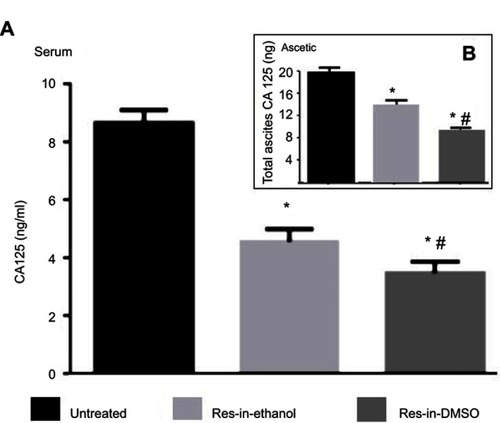Figures & data
Figure 1 Resveratrol improves general states of tumor-bearing rats. General states of tumor-bearing rats without treatment (Untreated) and treated with resveratrol in 10% ethanol (Res-in-Ethanol) or resveratrol in 0.2% DMSO (Res-in-DMSO) by evaluating average body weights (A), orthotopic tumor weights (B), ascetic volumes (C), and ascetic cancer cell numbers (D). The data obtained was validated by Student's t-test. *P<0.05 and #P<0.01 in comparison with the untreated group.
Abbreviation: Res, resveratrol.
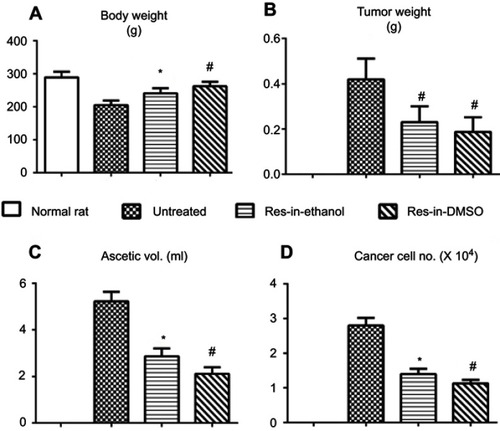
Figure 2 Sufficient resveratrol in orthotopic tumor tissues. (A and B) HPLC/DAD demonstration of retention times and absorbance of i.p. administered Res-in-ethanol and Res-in-DMSO in orthotopic ovarian cancer tissues. Peak-1, trans-resveratrol; Peak-2: 1,8–2 hydroxy anthraquinone as internal standard. (a) without treatment as the negative control; (b) Res-in-ethanol; (c) Res-in-DMSO. Student's t-test was used to validate the obtained data. *P<0.01 in comparison with b.
Abbreviations: AU, absorbance retention time; Res, resveratrol; HPLC, high performance liquid chromatography; DAD, diode array detector.

Figure 3 HPLC identification of trans-resveratrol in abdominal white plaques of Res-in-ethanol-treated rats. (A) Arrow indicates widely distributed white plaques on the surface of the peritoneal serosa of Res-in-ethanol treated rats (left), but not in Res-in-DMSO-treated rats (right). Inset, circled region at higher magnification (×80). (B) HPLC analysis of collected white plaques revealed a single peak that corresponded to trans-resveratrol. a, Control; b. Res-in-ethanol.
Abbreviations: AU, absorbance retention time; HPLC, high performance liquid chromatography; Res, resveratrol.
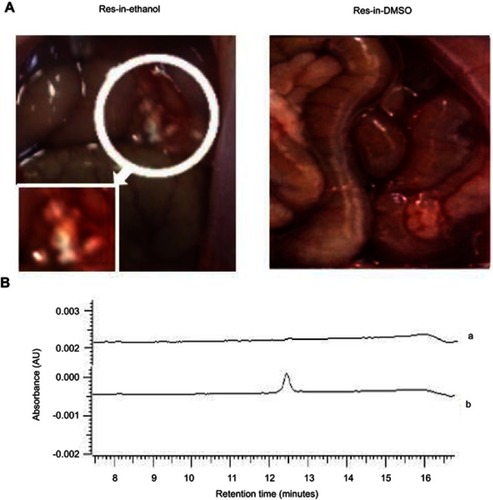
Figure 4 Resveratrol induces apoptosis in ovarian cancer tissues. (A) H&E morphological staining revealed more aggressive tumor growth of the untreated group. Extensive cell death was found in tumor tissues of both Res-in-ethanol and Res-in-DMSO groups. Arrows indicate regions with higher magnification in insets (×40). (B) DAB colorization and IF labeling of apoptotic cells in resveratrol-treated orthotopic tumor tissues by a TUNEL apoptosis assay (×20). Arrows indicate regions with higher magnification in insets (×40). (C) ImageJ x2-based evaluation of TUNEL immunofluorescent pixel values of untreated tumor tissues and the tumor tissues treated by Res-in-ethanol and Res-in-DMSO. ANOVA was used to validate these data. *P<0.01 in comparison with untreated tumor tissues.
Abbreviations: DAB, 3,3-diaminobenzidine tetrahydrochloride ; IF, immunofluorescence; Res, resveratrol.
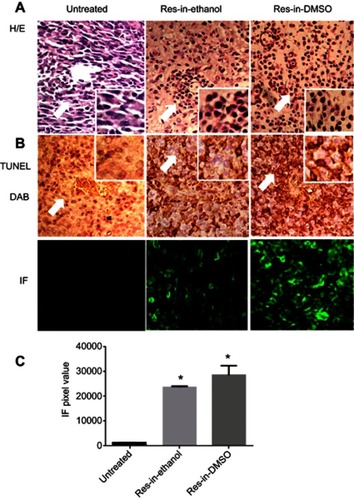
Figure 5 H & E staining showed neither cell death nor morphological alteration in the noncancerous ovarian tissues and the tissues of the heart, liver, spleen, lungs, kidneys and intestine of the tumor-bearing rats without drug treatment (Untreated), treated by Res-in-DMSO or Res-in-Ethanol.
Abbreviation: Res, resveratrol.
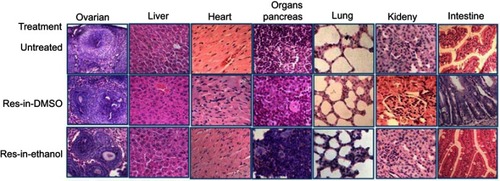
Figure 6 Resveratrol suppresses STAT3 activation in orthotopic ovarian cancer tissues. STAT3 transcription and nuclear translocation in ovarian cancer tissues were elucidated by immunohistochemical staining (A) and Western blotting. (B) Tumor samples were collected from untreated rats (Untreated) and rats treated with resveratrol in 10% ethanol (Res-in-ethanol) or 0.2% DMSO (Res-in-DMSO). Insets, ×40 magnification.
Abbreviation: Res, resveratrol.
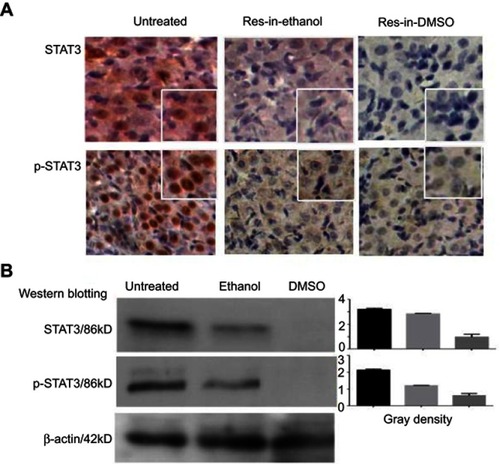
Figure 7 ARHI and PIAS3 upregulation in resveratrol-treated tumors. Immunocytochemical staining (A) and Western blotting (B) were conducted to analyze ARHI and PIAS3 expression in tumor tissues of untreated, resveratrol in 10% ethanol (Res-in-ethanol), and resveratrol in 0.2% DMSO (Res-in-DMSO) groups. Insets, ×40 magnification.
Abbreviation: Res, resveratrol.
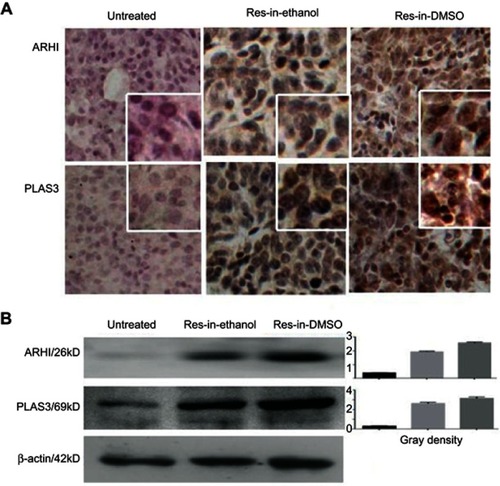
Figure 8 Decreased serum and ascetic CA125 levels in resveratrol-treated tumor-bearing rats. A CA125 ELISA was performed using the serum (A) and ascetic samples (B) of tumor-bearing rats without treatment (Untreated) and treated by intraperitoneal administration of resveratrol dissolved in 10% ethanol (Res-in-ethanol) or 0.2% DMSO (Res-in-DMSO). Student’s t-test was used to validate the obtained data. *, P<0.05 in comparison with the untreated group; #, P>0.05 in comparison with the Res-in-ethanol group.
Abbreviation: Res, resveratrol.
